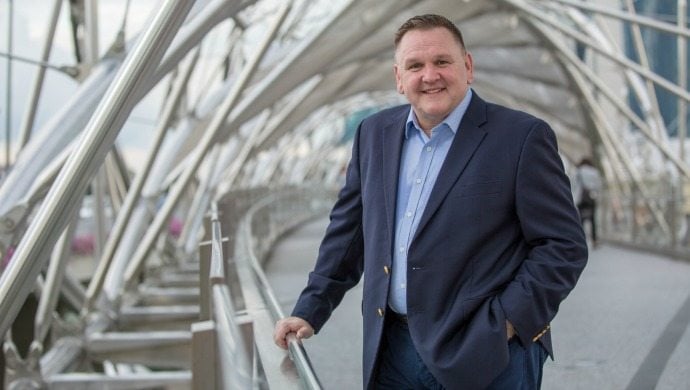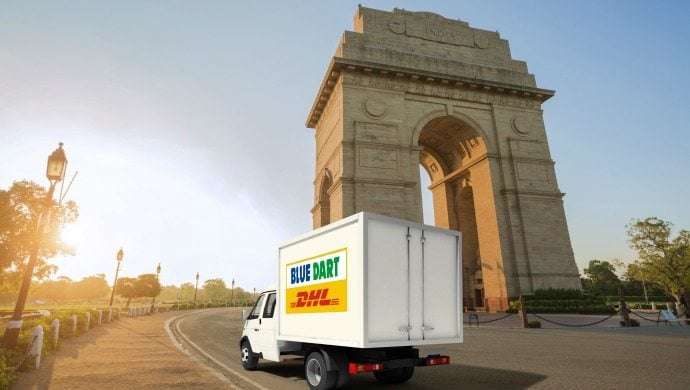(Interview with DHL eCommerce CEO Charles Brewer)
Globally, online sales represent approximately 9 per cent of retail sales whilst in Asia it is over 10 per cent, so Asia is a significant market for the company, says Brewer.
Thanks to an aggressive marketing campaign, DHL has become a household name, not just in India but in several countries across Southeast Asia. The firm works with many e-commerce as well as brick-and-mortar companies to provide last-mile connectivity in Asia, apart from Europe and the Americas.
DHL eCommerce, its e-commerce logistics unit, has been working with leading online retailers and marketplaces in Asia, which is a strategically important market. The Bern (Germany)-headquartered firm has recently developed an eco-friendly vehicle StreetScooter and driverless helicopter Parcelcopter for last-mile delivery in the country. As part of the expansion plans, DHL is planning to bring these new vehicles to Asia in the near future.

Wetalked to DHL eCommerce CEO Charles Brewer to know the company’s plans for Southeast Asia and India.
E-commerce is among India’s fastest growing sectors and is expected to grow at a CAGR of 52 per cent to touch US$36.7 billion by 2020. How well-equipped is DHL eCommerce to tap this opportunity?
Through Blue Dart, subsidiary of DHL eCommerce, and the other DHL business units (DHL Express, DHL Supply Chain and DHL Global Forwarding), we are the market leader in the logistics industry in India, and we will continue to invest and develop our capabilities to stay ahead of the curve. For instance, we just announced an investment of EUR 70 million (US$75 million) to expand our air hubs in Delhi and Mumbai. This allows for improved service levels and more capacity to handle the ever growing volumes expected from the e-commerce sector.
India’s B2C e-commerce has been going through a tough patch of late, while B2B e-commerce has seen good growth. How do you look at this trend?
We are positive that the e-commerce segment will continue to get bigger and bigger. In India, we expect this to grow to EUR 30-40 billion (US$32-42 billion) by 2020, growing at a CAGR of 30-35 per cent from 2014 to 2020. Going forward, Blue Dart’s focus is to continue growing our market leadership position in the B2C e-commerce logistics space, and we are investing hugely in this area through our people, our services, our technology, innovative solutions, and extending our coverage in India.

What are the key advantages of the SEA e-commerce and logistics market vis-a-vis Europe?
Southeast Asia, like many other markets, will continue to experience huge growth in the e-commerce sector. It is a market of more than 630 million — a large and growing population. Online sales represent approximately 3 per cent of retail sales. It has an accelerating internet environment, one of the fastest growing m-commerce markets, and will be the next e-commerce wonderland.
B2C e-commerce is fast growing in Asia, but still a huge chunk of shopping is happening offline, as a significant portion of people live in villages. What are DHL eCommerce’s plans to tap into this massive opportunity?
Globally, online sales represent approximately 9 per cent of retail sales, whilst in Asia it is over 10 per cent, so Asia is somewhat ahead of the rest of the world. That said, the opportunity is still significant and as you note, many e-tailers are now focusing more and more on secondary and tertiary markets where retail access is limited. In India, Blue Dart recently expanded the number of pin (postal index number) codes served. We currently have an extensive coverage of over 5,400 pin codes and will continue to aggressively grow and increase our coverage.
Many B2C logistics companies in India have either shut down or scaled down their operations in the past few months. How do you look at this sluggish growth in the B2C e-commerce logistics?
With the rising internet and mobile phone penetration, the e-commerce market in India can only get bigger. We still see great potential in this market, which is why we are investing EUR70 million (US$75 million). As the world’s leading logistics company with presence in over 220 countries and territories, coupled with Blue Dart’s unparalleled local expertise, we are completely committed to India and see a very bright future. We put the smile in the last mile.
Given the complexity of the Indian market, it is not feasible for DHL to take its Parcelcopter and other innovations to India in the near future? So, do you plan to invest in or acquire startups in this space, which have better local knowledge and expertise?
DHL always ‘thinks global and acts local’ … and in India we have a fantastic and very ‘local’ company in Blue Dart, which has been the market leader in India since inception in the 1980s.
In terms of using the Parcelcopter in India, we would love to do so, but of course it is predicated on the local legislation. So whilst you may not see a Blue Dart Parcelcopter flying around India anytime soon, we will as soon as allowed to do so.
Like other large MNCs, do you have plans to launch a VC fund for the logistics segment in India?
No, not at this moment.
(source : https://e27.co/south-east-asia-next-ecommerce-wonderland-dhl-charles-brewer-20161123/)



















